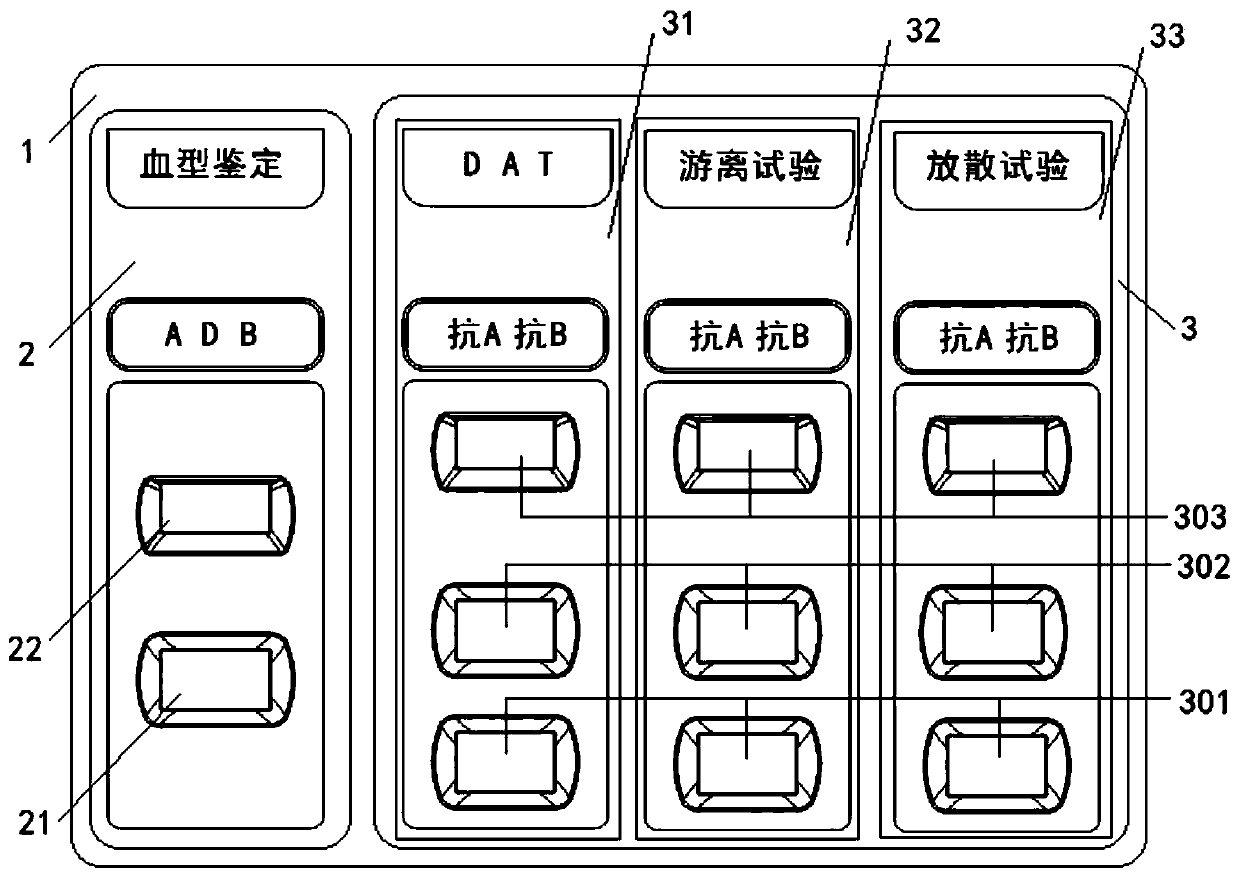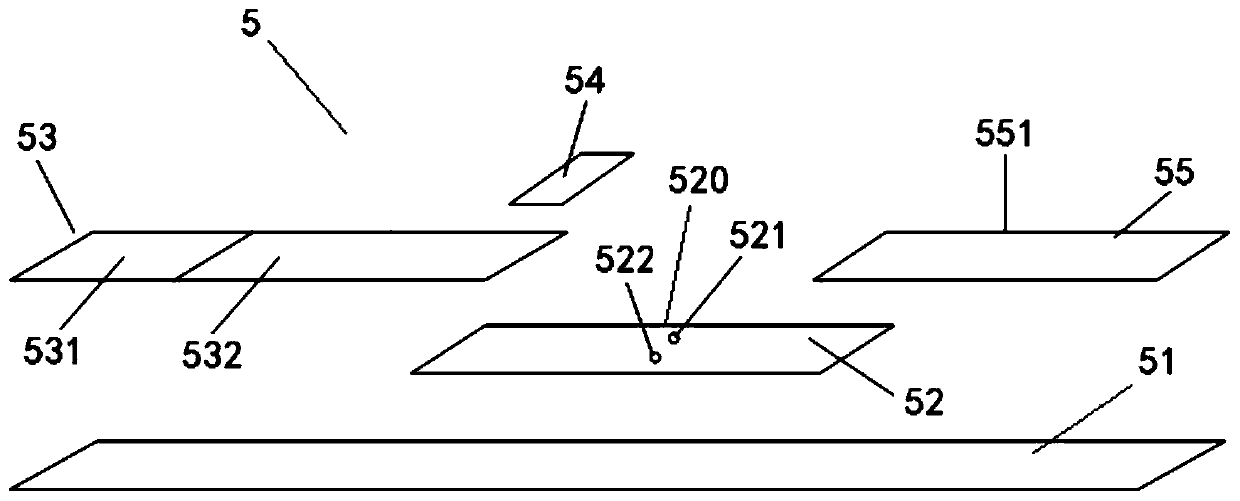Neonatal blood type and hemolytic disease comprehensive detection card
A newborn and detection card technology, applied in biological testing, measuring devices, disease diagnosis, etc., can solve the problems of needing auxiliary equipment, long detection time, high cost, etc., and achieve the effect of no auxiliary equipment, short detection time and simple structure
- Summary
- Abstract
- Description
- Claims
- Application Information
AI Technical Summary
Problems solved by technology
Method used
Image
Examples
Embodiment 1
[0032]A comprehensive testing card for neonatal blood type and hemolytic disease, comprising a casing 1, a test strip 4 for testing ABO and RhD blood types, and three testing strips 5 for testing three items of hemolysis.
[0033] Such as figure 1 , 2 , 3, an ABO, RhD blood type detection test strip 4 and shell 1 form a blood type identification area 2, and three hemolysis and three detection test strips 5 and shell 1 constitute the neonatal erythrocyte direct antiglobulin test (DAT) detection part respectively 31. A neonatal free antibody detection unit 32 , a newborn erythrocyte eluate antibody detection unit 33 , the detection unit 31 , the detection unit 32 and the detection unit 33 constitute a hemolysis three-item detection area 3 .
[0034] The ABO and RhD blood type test strip 4 is sequentially provided with a flushing area 421, a sample addition reaction area 422, and a water absorption area 441 from upstream to downstream, including a substrate 41 and a reaction fil...
Embodiment 2
[0040] Use a kind of neonatal blood type and hemolytic disease comprehensive detection card of embodiment 1 to identify neonatal erythrocyte blood type, specifically include the following steps:
[0041] (1) Adding samples: add 10ul of EDTA anticoagulated / sodium citrate anticoagulated venous blood of the newborn to be tested in the sample loading reaction well 22 of the blood type identification area.
[0042] (2) Add rinsing solution: wait for 10 seconds after adding the sample, and add 40-80 ul of rinsing solution to the rinsing hole 21 of the blood type identification area.
[0043] (3) Interpretation of results: wait for 1 minute after adding the washing solution, and interpret the results in the sample addition reaction well 22. If the detection point is red, it is a positive reaction. Red means the blood type is B, and the D test point is red, which means the blood type is D; the test point does not show color, which is a negative reaction. For detailed explanation of t...
Embodiment 3
[0045] A kind of neonatal blood type and hemolytic disease comprehensive detection card of embodiment 1 is used to detect whether there is sensitized immune antibody on neonatal erythrocytes, that is, erythrocyte direct antiglobulin test (DAT), specifically comprises the following steps:
[0046] (1) Sample preparation: After washing erythrocytes of newborns with normal saline for 3-4 times, a 10% normal saline suspension was prepared.
[0047] (2) Adding samples: adding 10 ul of the above sample to the sample injection hole 302 of the neonatal erythrocyte direct antiglobulin test (DAT) detection part.
[0048] (3) Add rinsing solution: wait for 10 seconds after adding the sample, add 40-80 ul of rinsing solution to the rinsing hole 301 of the detection part of the neonatal erythrocyte direct antiglobulin test (DAT).
[0049] (4) Interpretation of the results: wait for 1 minute after adding the washing solution, and interpret the results in the reaction well 303. If the detect...
PUM
 Login to View More
Login to View More Abstract
Description
Claims
Application Information
 Login to View More
Login to View More - R&D
- Intellectual Property
- Life Sciences
- Materials
- Tech Scout
- Unparalleled Data Quality
- Higher Quality Content
- 60% Fewer Hallucinations
Browse by: Latest US Patents, China's latest patents, Technical Efficacy Thesaurus, Application Domain, Technology Topic, Popular Technical Reports.
© 2025 PatSnap. All rights reserved.Legal|Privacy policy|Modern Slavery Act Transparency Statement|Sitemap|About US| Contact US: help@patsnap.com



